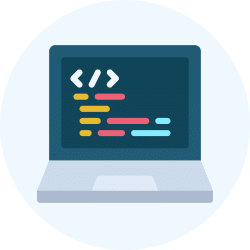Assignment: System Hacking Techniques | Ethical Hacking using Kali Linux (in English) - Software Development PDF Download
| Table of contents |

|
| Multiple Choice Questions (MCQs) |

|
| Fill in the Blanks |

|
| True/False |

|
| HOTS (Higher Order Thinking Skills) Questions |

|
| Hands-on Coding Questions |

|
Multiple Choice Questions (MCQs)
Q1: What is the first step in system hacking?
(a) Covering tracks
(b) Gaining access
(c) Maintaining access
(d) Cracking passwords
Ans: (b) Gaining access
Q2: Which tool is commonly used for privilege escalation?
(a) john
(b) meterpreter
(c) netstat
(d) whois
Ans: (b) meterpreter
Q3: What is the purpose of the passwd command in Linux?
(a) List all users
(b) Change a user’s password
(c) Display system logs
(d) Terminate processes
Ans: (b) Change a user’s password
Q4: Which tool is used for offline password cracking?
(a) hydra
(b) john the ripper
(c) tcpdump
(d) nmap
Ans: (b) john the ripper
Q5: Which command can be used to check for open ports and active connections on a system?
(a) netstat -an
(b) whoami
(c) ls -la
(d) ping -t
Ans: (a) netstat -an
Q6: What is a common method for hiding malicious processes on a system?
(a) Rootkits
(b) Firewalls
(c) Antivirus software
(d) SSH tunnels
Ans: (a) Rootkits
Q7: Which attack involves injecting malicious code into a system’s memory?
(a) Phishing
(b) Buffer overflow
(c) SQL injection
(d) Brute force attack
Ans: (b) Buffer overflow
Q8: What is the main purpose of a keylogger?
(a) Encrypt user data
(b) Record keystrokes
(c) Perform network scanning
(d) Hide processes
Ans: (b) Record keystrokes
Q9: How can a hacker maintain access to a compromised system?
(a) Changing the victim’s wallpaper
(b) Installing a backdoor
(c) Clearing browser history
(d) Running a virus scan
Ans: (b) Installing a backdoor
Q10: Which tool is used to exploit known vulnerabilities in systems?
(a) wireshark
(b) metasploit
(c) aircrack-ng
(d) snort
Ans: (b) metasploit
Fill in the Blanks
Q1: The ________ tool is used to crack password hashes offline.
Ans: john the ripper
Q2: ________ is used to escalate privileges on a compromised system.
Ans: meterpreter
Q3: The command ________ is used to list active network connections.
Ans: netstat -an
Q4: Rootkits are used to ________ malicious activities on a system.
Ans: hide
Q5: A ________ is a tool that records every keystroke entered on a system.
Ans: keylogger
True/False
1. Buffer overflow exploits can allow attackers to execute arbitrary code.
Ans: True
2. A keylogger is used to protect systems from unauthorized access.
Ans: False
3. Netstat can display all open ports on a system.
Ans: True
4. Privilege escalation allows attackers to gain higher-level access to a system.
Ans: True
5. Metasploit is mainly used for scanning network traffic.
Ans: False
 |
Download the notes
Assignment: System Hacking Techniques
|
Download as PDF |
HOTS (Higher Order Thinking Skills) Questions
Q1: You are testing the security of a client’s system and need to check if it is vulnerable to privilege escalation. How would you proceed?
Ans: Use whoami to check the current user, then sudo -l (Linux) or whoami /priv (Windows) to check available privileges. Attempt known exploits using meterpreter.
Q2: A company suspects an unauthorized process is running on its system. How would you investigate and detect hidden processes?
Ans: Use ps aux (Linux) or tasklist /v (Windows) to list all processes, then compare with known system processes. Use rkhunter to check for rootkits.
Q3: You have successfully gained low-level access to a system. What are some ways to escalate privileges?
Ans: Exploit misconfigured SUID binaries, use kernel vulnerabilities (dirtycow), search for stored credentials, or use privilege escalation scripts like LinPEAS.
Q4: Your team discovers a system infected with a keylogger. What steps should you take to remove it and secure the system?
Ans: Identify the malicious process (tasklist, ps aux), terminate it, delete associated files, check startup entries, and scan with antivirus software.
Q5: During a penetration test, you find an open port running an outdated service. How would you exploit this vulnerability?
Ans: Use nmap -sV to identify the service and version, search for exploits using searchsploit or Metasploit, and attempt to exploit using a tested payload.
Hands-on Coding Questions
Q1. Write a Python script to check for open ports on a target system.
Ans:
import socket
target = "192.168.1.10"
ports = [21, 22, 80, 443, 445, 3389]
for port in ports:
sock = socket.socket(socket.AF_INET, socket.SOCK_STREAM)
sock.settimeout(1)
result = sock.connect_ex((target, port))
if result == 0:
print(f"Port {port} is open")
sock.close()
Q2: Create a Bash script to monitor running processes and detect unauthorized ones.
Ans:
#!/bin/bash
echo "Checking for suspicious processes..."
ps aux | grep -E "(nc|netcat|ncat|bash -i|sh -i)"
|
95 videos|6 docs
|
FAQs on Assignment: System Hacking Techniques - Ethical Hacking using Kali Linux (in English) - Software Development
| 1. What are common techniques used in system hacking? |  |
| 2. How can organizations protect themselves from system hacking? |  |
| 3. What is the role of ethical hacking in system security? |  |
| 4. What are the legal implications of system hacking? |  |
| 5. What tools are commonly used in system hacking? |  |





















